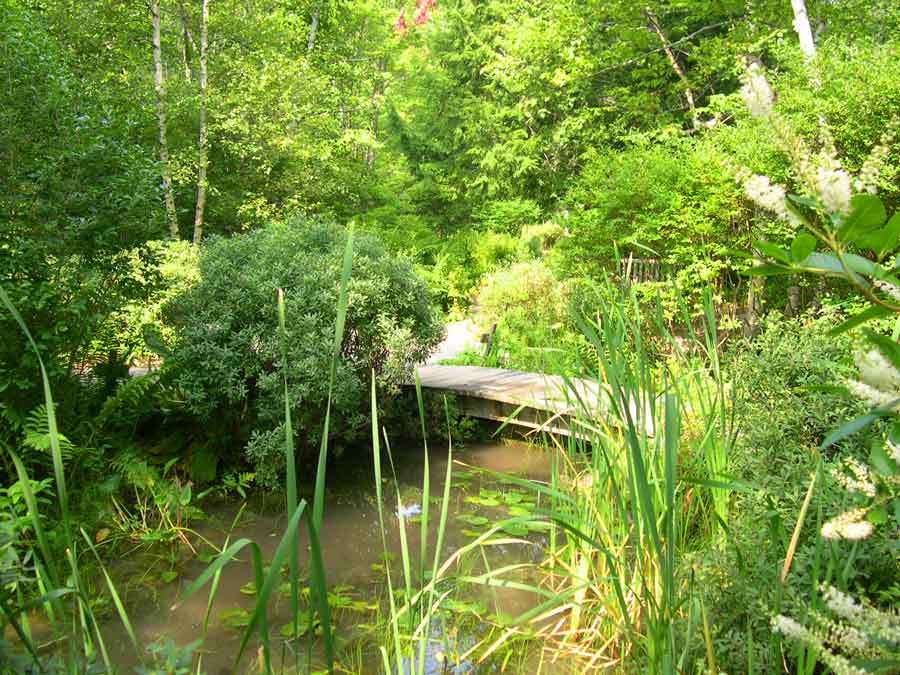
Sieur de Monts is one of the best warbler watching spots on the island. The mountain spring alone would be enough to attract birds, but this is also home to the Wild Gardens of Acadia. Mature deciduous trees - mostly oak, sugar maple, hawthorn, and beech - predominate around the spring. The garden is divided into 12 sections, each an example of the different habitat types found in Acadia. Thus, it is a wild garden, not a typical suburban flowering garden. The Bird Thicket provides plants that are attractive to fruit and seedeaters. Red-eyed vireos are very common, while the most frequently occurring warblers are yellow, black-throated green, common yellowthroat, American redstart, and ovenbird. Also look for black-and-white, northern parula, chestnut-sided, and yellow-rumped Warblers around the parking lot. Common flycatchers include eastern phoebes near the buildings, eastern wood pewees in the mature trees beyond the Abbe Museum, and alder flycatchers in the brushy fields on the outskirts of the site. Woodpeckers are abundant in the area. Hairy, downy, and pileated woodpeckers, yellow-bellied sapsuckers, and northern flickers are seen regularly.
There are several walking paths available, but the most productive trail exits the parking lot on the right side of the Wild Gardens. At the outset, the small trees are handy for American redstarts and chestnut-sided warblers. As the path leaves the saplings and enters the grove of mature hemlocks, blackburnian warblers, scarlet tanagers, hermit thrushes, and ovenbirds are a good bet. Beyond the grove, the trail circles a damp, open area that is promising for Nashville warblers, swamp sparrows and alder flycatchers. Other enjoyable paths lead southward from the parking lot, past the Abbe Museum, and on to a small pond called “The Tarn.” Check the pond carefully because there are frequently ducks hidden in the reeds. Black-throated blue warblers are usually heard singing from the extensive stands of birches on the mountainside beyond the pond.
Directions: from Route 3 south of Bar Harbor or from the Park Loop Road, follow the signs to the spring. Deciduous trees predominate here, unlike the spruce/fir mix that prevails along the ocean edge.
GPS: 44.361810, -68.207969

